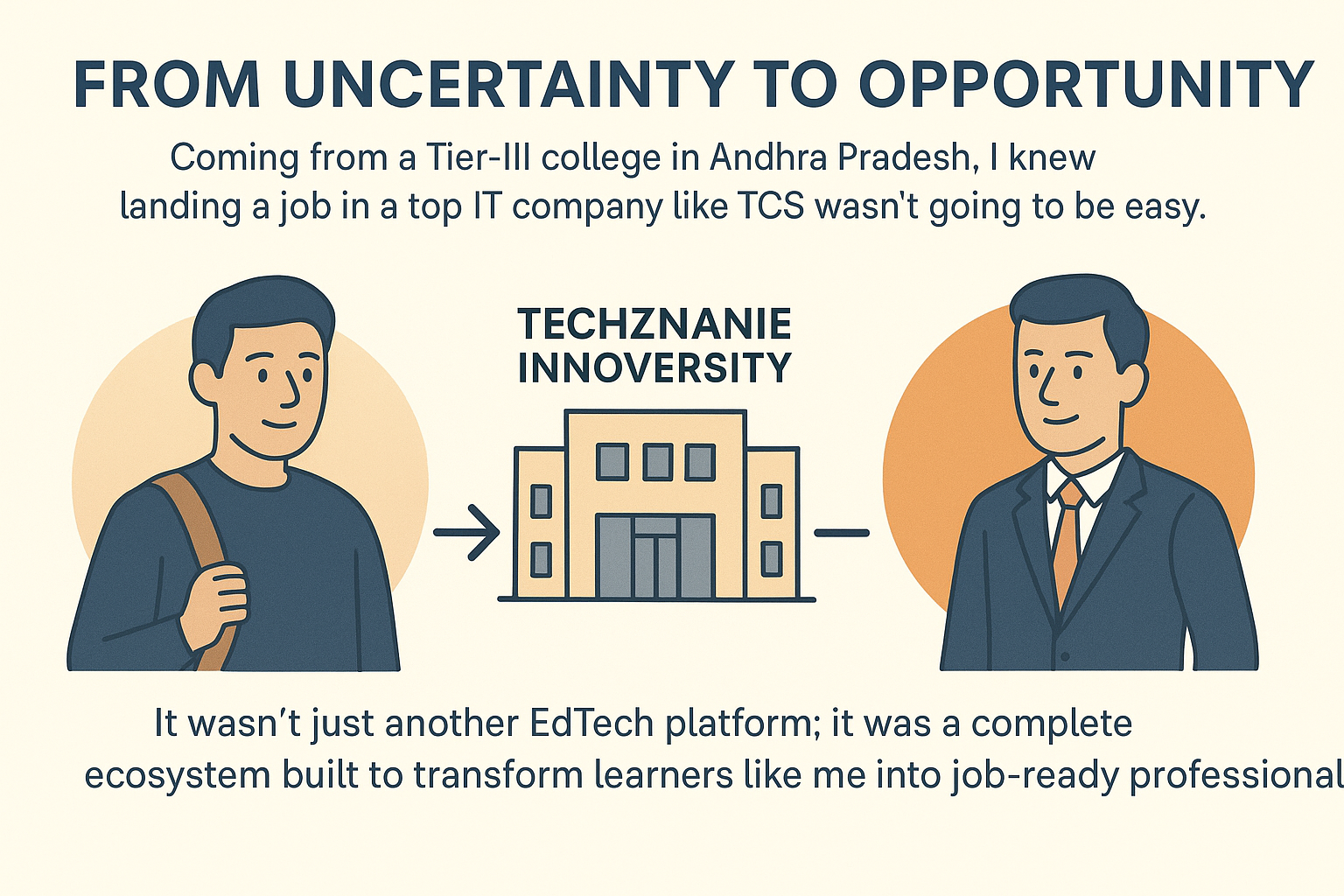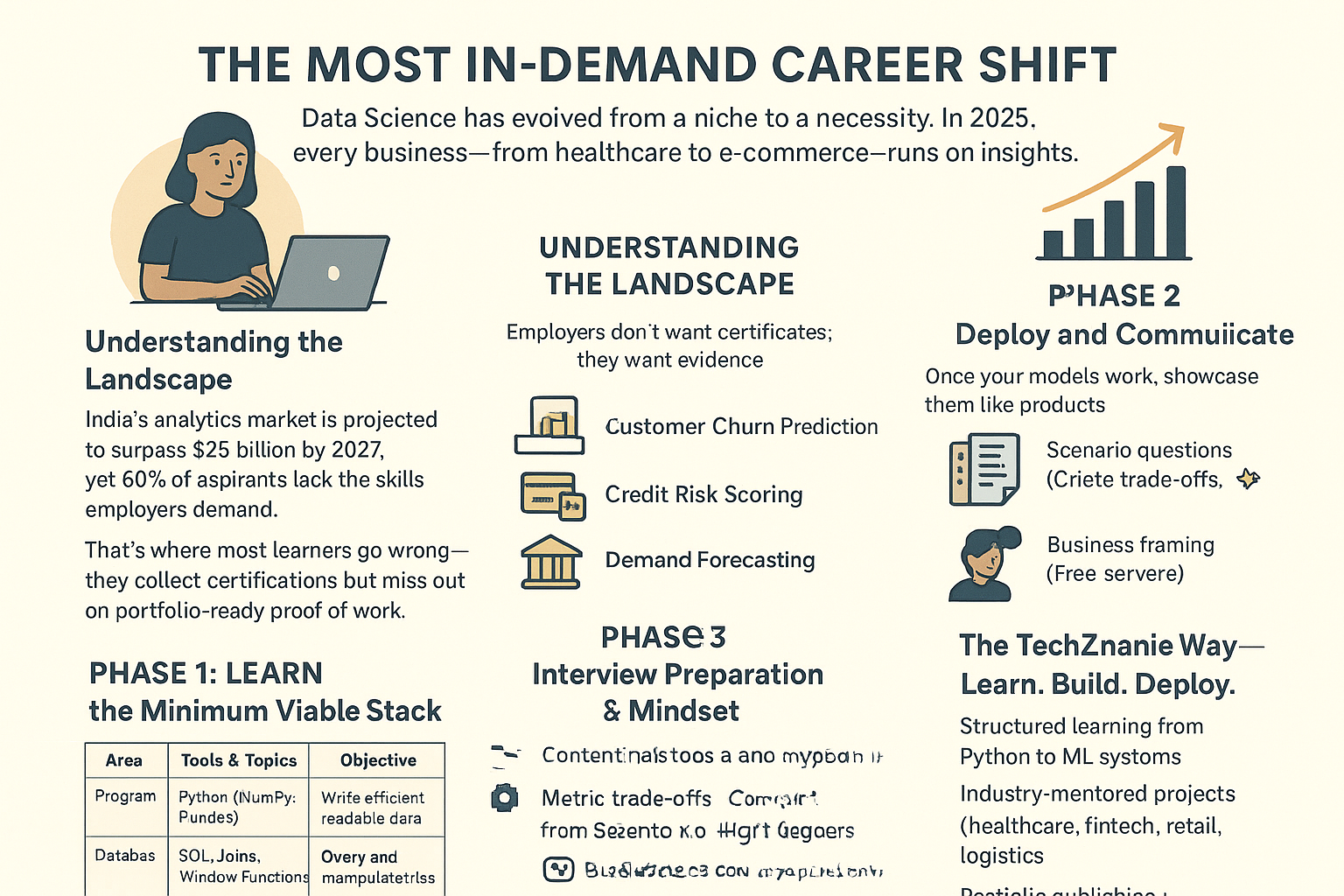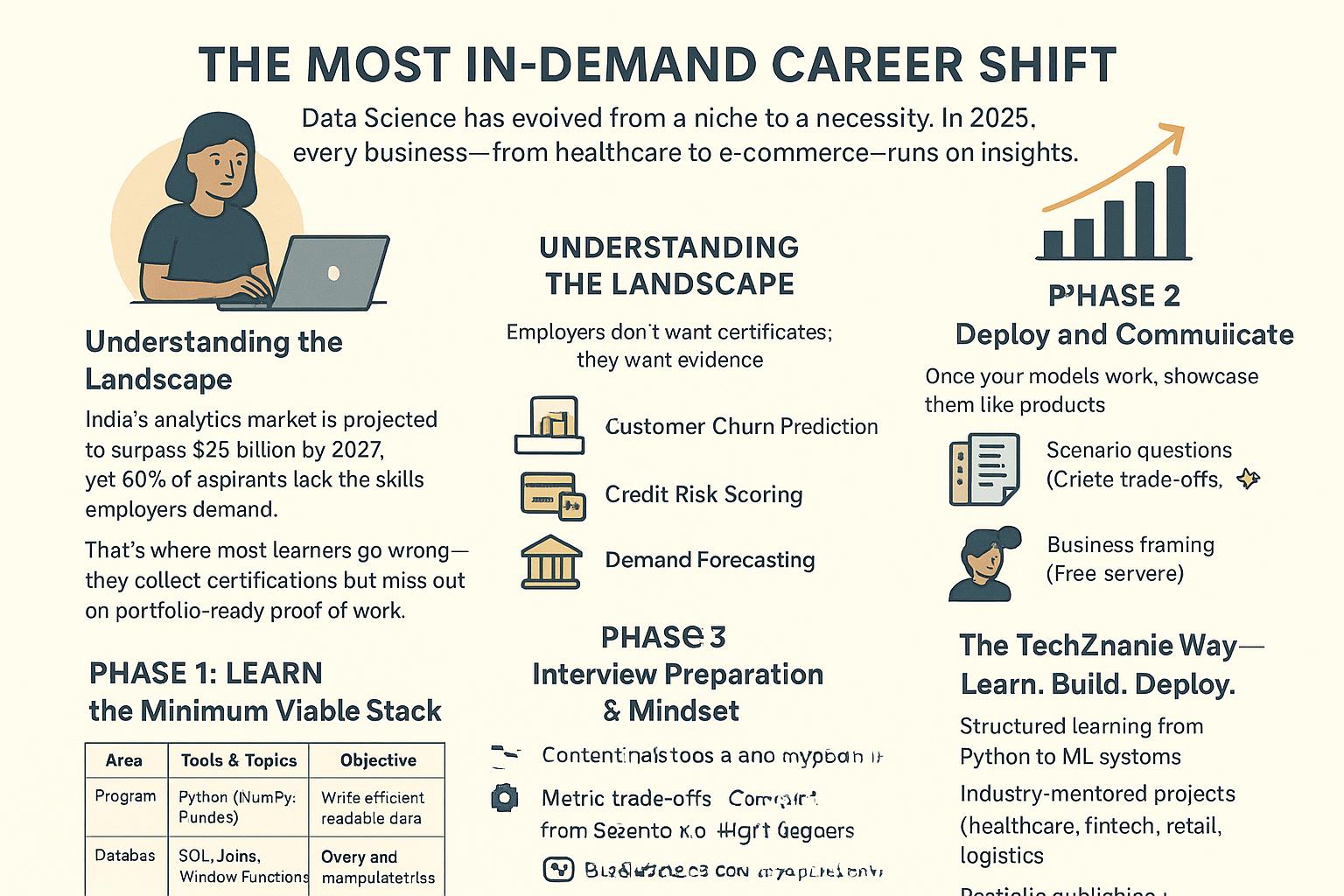From Tier-III College to TCS — My Journey
Mon, 27 Oct 2025

Follow the stories of academics and their research expeditions

Data Science has evolved from a niche to a necessity. In 2025, every business — from healthcare to e-commerce — runs on insights. But breaking into this domain isn’t about memorizing algorithms; it’s about mastering how to apply data to solve real-world problems.
Whether you’re a student, fresher, or professional from a non-tech background, the key to entering Data Science lies in a structured roadmap, practical projects, and mentorship.
India’s analytics market is projected to surpass $25 billion by 2027, yet 60% of aspirants lack the skills employers demand.
That’s where most learners go wrong — they collect certifications but miss out on portfolio-ready proof of work.
Employers are not hiring for “course completion”; they’re hiring for data fluency, problem framing, and insight generation.
Before diving into machine learning, you must learn how to clean, explore, and interpret data. Focus your first 4–6 weeks on these essentials:
| Area | Tools & Topics | Objective |
|---|---|---|
| Programming | Python (NumPy, Pandas) | Write efficient, readable data scripts |
| Databases | SQL, Joins, Window Functions | Query and manipulate large datasets |
| Statistics | Distributions, Correlation, Hypothesis Testing | Build analytical intuition |
| Visualization | Matplotlib, Seaborn, Power BI/Tableau | Communicate insights effectively |
Tip: Don’t chase 20 tools — master 4 that help you explain why trends happen.
Employers don’t want certificates; they want evidence. Start with 2–3 domain-based projects that showcase your problem-solving approach.
Sample Projects:
Each project should have:
Once your models work, showcase them like products:
The ability to explain your thought process is what turns data users into data scientists.
Recruiters test mindset more than math. Prepare for:
Remember, your portfolio replaces half the Q&A — when they see your work, they already know your capability.
TechZnanie Innoversity’s AI & Data Science Career Track is built exactly on this principle:
“In TechZnanie, we don’t teach Data Science — we teach employable data problem-solving.”
| Week | Focus | Deliverable |
|---|---|---|
| 1–3 | Python, SQL, Stats | Clean dataset mini-project |
| 4–6 | ML Algorithms | EDA + Classification project |
| 7–9 | Domain Capstone | Streamlit app + blog post |
| 10–12 | Resume & Mock Interviews | Portfolio presentation |
“Don’t aim to learn everything — aim to prove something.”
— TechZnanie Innoversity, India’s Employability Engine
The data industry doesn’t reward those who know; it rewards those who can apply, build, and explain. Your transition starts when you stop consuming tutorials and start creating outcomes.
Mon, 27 Oct 2025

Mon, 27 Oct 2025

Mon, 27 Oct 2025

Leave a comment